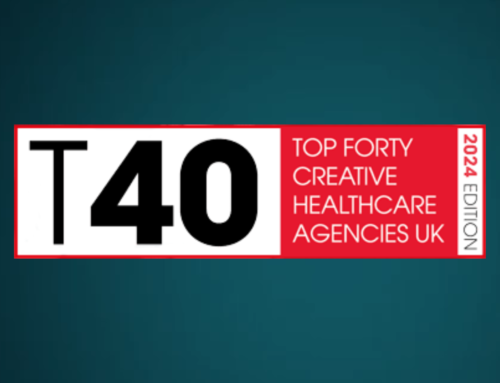
This is a guest article produced by Impetus Digital. The original post can be accessed here

Doubtlessly, one of the defining phrases of the 2010s is “fake news.” We hear it being thrown around by politicians and celebrities alike, not to mention by social media users when they disagree with a news article or editorial. The Pharma industry is no stranger to fake news either. Anyone who spends any time on Facebook or Twitter knows that pseudoscientific articles, whether on the long-ago debunked association between vaccines and autism or “the truth about cancer,” spread like wildfire, sometimes with deadly results. It might seem obvious for those in the industry; however, the average social media user generally does not look for the primary source of information when reading these articles. That is, if a citation is even included.

In addition, some of you may recall news articles claiming that research showed that drinking a glass of red wine is equivalent to an hour at the gym (wouldn’t that be nice!). This is just one example of a sensationalized headline where study results are greatly exaggerated or taken out-of-context. While this is a fairly benign example and not necessarily fake news per se, these kinds of articles also contribute to the public’s perception of science and the pharmaceutical industry.
Clearly, combating fake news will need to become a priority for Pharma in 2020 and beyond. The best strategy for doing so, however, remains unclear. Using vaccine hesitancy as an example, the research on how to best get through to vaccine-hesitant parents or patients is still unsettled. 1-5
Accordingly, the question is: how can we help HCPs, patients, and their families navigate the world of fake news?
Predatory Journals
To complicate matters more, not all scientific research is equal. There are numerous questionable papers and journals out there, undermining the concept of peer-review. You may have read about the bogus article comprising the words “Get me off your f***ing mailing list” over and over for more than 800 times. For a relatively cheap $150, it was accepted in The International Journal of Advanced Computer Technology, clearly without peer-review or even basic proofreading. Of course, far from everything published in predatory journals is bad science, but the inclusion of junk science together with well-designed studies lowers the credibility of all published articles.
Steps taken so far
In April 2019, 43 scholars and publishers from 10 countries met in Ottawa, Canada. Their goal was to agree on a definition of “predatory publishing” as a first step to stop the practice of predatory journals and ensure high-quality scholarship. After 12 hours of discussion, consensus was reached, and the group’s findings were recently published as a Comment in Nature:

“Predatory journals and publishers are entities that prioritize self-interest at the expense of scholarship and are characterized by false or misleading information, deviation from best editorial and publication practices, a lack of transparency, and/or the use of aggressive and indiscriminate solicitation practices”
This definition is in alignment with the positions taken by other groups, including the joint statement released by the American Medical Writers Association, European Medical Writers Association, and the International Society for Medical Publication Professionals earlier in 2019.
While these predatory journals target mostly academics, many desperate for publications to add to their CV, Pharma is not immune. For Pharma, disseminating data to payers, doctors, and other HCPs is the primary objective of publishing. Sometimes, the data are not ground-breaking enough to warrant publication in a high-impact factor journal. In these cases, lesser-known journals with fast times to acceptance can be attractive options. However, for HCPs who rely on peer-reviewed research as their main source of information on new Pharma-sponsored trial data, this can be, at best, confusing and, at worst, intentionally misleading.
Tools in Fighting “Fake News” in Pharma
To address the fake news and pseudoscience conspiracies spread online, there is a clear need for better strategies. Any attempts of Pharma to fight fake news need to be sincere and free of bias. To achieve this, Pharma will need input from all relevant stakeholders, including patients and their families. This could be in the form of survey-based studies or through patient advisory boards or public forums. Resources for patients on how to spot fake news, such as websites, handouts, or short YouTube videos, are other options Pharma could look into.
Identifying predatory journals
When it comes to predatory publishing, the Directory of Open Access Journals (DOAJ) is a not-for-profit organization listing over 14,000 open access journals that adhere to high standards and peer-review. This is a great starting point in identifying predatory journals. However, brand-new journals and journals from developing countries may resemble predatory journals in many regards; there is a large grey area.

Accordingly, companies may also want to consider medical education to help HCPs and investigators recognize the signs of a predatory journal. To reach a larger audience, online formats are effective. These may include live and on-demand webinars, asynchronous learning activities, and virtual journal clubs. Likewise, internal training for clinical and medical affairs teams could help employees identify and rebut bad science.
For compliant and secure reviews of educational, clinical, or other materials, tools such as Papercurve can help consolidate references and speed up the review process, using a single source of truth.
No matter which approach you choose, fake news and predatory publishing are modern problems that will stick around in the 2020s. Fighting these will require out-of-the-box, creative thinking, and equally creative solutions.








